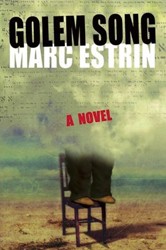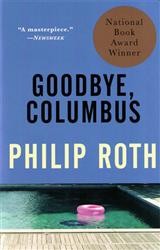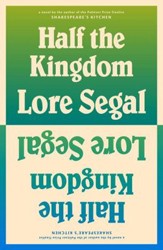Auschwitz is the main setting of The Death’s Head Chess Club. In a time and place where no rules of civilization apply, where any understanding of past actions and deeds makes no sense, and where there is no frame of human reference, there is a chess championship to be played out. And only German superiority and intelligence can prevail in this game of logic, skill, and cunning. Is any other outcome remotely possible?
This engrossing story centers on a Jew and two Germans. The action alternates between World War II and an international chess tournament in 1962 Amsterdam.
Emil Clement and his family have been transported from Paris to Auschwitz. Known as “The Watchmaker,” he is sent to the slave labor factory workshops at the Monowitz subdivision. His horrifying existence is altered when he is recruited to play chess by a prisoner guard. Chess brings him his only hope of salvation, as he continues to win match after match.
Paul Meissner, an SS officer, was wounded on the Russian front and sent to Monowitz to boost both efficiency and staff morale in a cultural manner. He initiates a chess club for the officers at the idyllic Solahutte SS Country Club nearby.
The third character, Willi Schwengier, a German chess champion, works for Goebbels’s Propaganda Ministry in Berlin.
These three men find each other two decades later in Amsterdam. Meissner is now a Catholic bishop, Emil an Israeli, and Schwengier is set to play against Emil in a hate-filled chess match. They form a trio of tortured characters. Together they relive the past and piece together their stories. It is a complex and often inexplicable narrative. Slowly the characters evolve and talk of morality, forgiveness, friendship, and coming to terms with yourself while seeking peace. Meissner yearns for repentance for his soul.
Circumstances advance Emil from prisoner chess games to perilous matches facing SS officers. Much hinges on his winning for himself as well as the diverse cast of characters he encounters, becomes entangled with, and is ultimately beholden to. Emil plays chess in a wise but divine and mystical way while finding a new level of faith and hope.
Donoghue has duly researched and recreated Auschwitz. Horrors are given their full due as he recounts the day-to-day dread of expendable prisoners, the randomness of who dies or lives, selections and gassings, black market logistics, the camp underworld hierarchy and absurdities, and the pecking order of the Nazi command. The blood-chilling methods and systems for running the ever-efficient labor and death German war machine are recounted.
Yet this is a story much like chess, with an opening move, a middle game, and an end game, as it explores the themes of survival, guilt, friendship, and healing.
Each chapter heading carries the name of a chess term that is fully explained in a glossary. Limited familiarity with the game is in no way a distraction or detrimental to identifying with this book, but could enhance the reader’s enjoyment of the applied strategies of chess in the novel.
Related Content:
- Alan Lelchuk: Meeting Pagliansky in Moscow
- The Other Half of Life by Kim Ablon Whitney
- Black Season by Michal Glowinski
Renita Last is a member of the Nassau Region of Hadassah’s Executive Board. She has coordinated the Film Forum Series for the Region and served as Programming and Health Coordinators and as a member of the Advocacy Committee.
She has volunteered as a docent at the Holocaust Memorial and Tolerance Center of Nassau County teaching the all- important lessons of the Holocaust and tolerance. A retired teacher of the Gifted and Talented, she loves participating in book clubs and writing projects.





